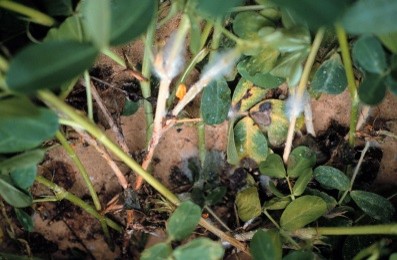Sclerotinia blight risk has been, and continues to be, high this summer and timely fungicide applications based on advisories (Peanut-Cotton Infonet, http://webipm.ento.vt.edu/cgi-bin/infonet1.cgi) and scouting are needed to avoid devastating outbreaks of this disease. Unfortunately, it has been reported that Omega, the most effective fungicide for Sclerotinia blight control, is in short supply, and growers are looking for alternatives. At this point we are recommending Fontelis at a rate of 1.5 pints per acre. According to Barbara Shew, Extension Plant Pathologist at North Carolina State University, 1.5 pints per acre of Fontelis provide Sclerotinia control similar to one pint of Omega. Note that lower rates of Fontelis typically used for leaf spot control are not adequate for control of Sclerotinia. A follow-up Fontelis application should be made 2 to 3 weeks after the first application or according to the Sclerotinia blight advisory, but keep in mind that only two applications of this fungicide class (SDHI, group 7) should be made per year to minimize the risk of fungicide resistance. In fields with high Sclerotinia pressure, avoid using chlorothalonil (Bravo and generics) in August or early September for leaf spot control since this can increase the severity of Sclerotinia blight outbreaks. Alternatively, use strobilurin fungicides such as Abound or Headline or a triazole such as Provost for leaf spot control. However, the final leaf spot application of the season should be chlorothalonil for the purpose of fungicide resistance management. 
